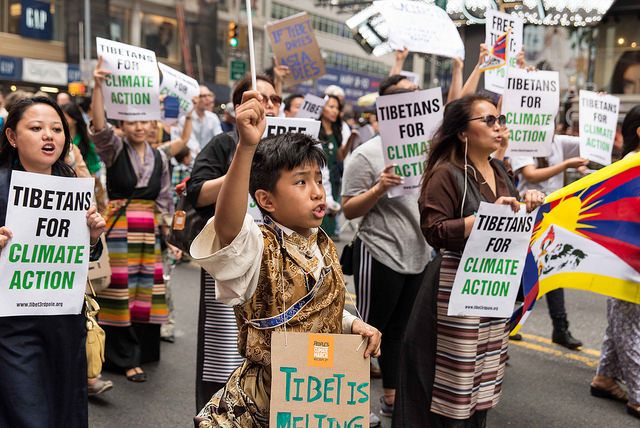This blog was originally posted on WRI Insights on June 11, 2015.
By Nicholas Tagliarino and Lalanath de Silva
WRI and the Access initiative (TAI) recently launched the Environmental Democracy Index (EDI), the first online platform that tracks and scores 70 countries’ progress in enacting national laws that promote transparency, accountability and citizen engagement in environmental decision-making. These three “environmental democracy” principles are foundational elements for sustainable development and for ensuring basic human rights. While EDI resulted in a comprehensive ranking of countries, the story doesn’t end there. Truly evaluating environmental rights in countries around the world is a lot more complicated than one might think.
The Environmental Democracy Index
EDI assesses national laws against a set of 75 legal indicators designed to show whether a country’s laws conform with the UNEP Bali Guidelines, a set of principles meant to guarantee environmental democracy. EDI’s scores provide insight on the best and worst countries for environmental democracy. National laws establish a foundation on which environmental advocacy can take place. Laws often provide the public and the environment with a set of guaranteed protections. They also serve as a point of reference when the public wishes to challenge government and private actor decisions that harm the environment. While the legal language of environmental democracy laws is important to assess, it also matters whether these laws are actually being implemented, and if there is an enabling environment for citizens to fully capitalize on opportunities set out in these laws. This more comprehensive assessment of environmental democracy depends on broader questions, such as: Are laws enforced and respected in a particular country? Are governments behaving corruptly? Is there an enabling environment for citizens to exercise these rights? Are human rights being violated? EDI has a limited set of 24 practice indicators that provide insight into discrete aspects of law implementation, but these are not yet comprehensive, and practice indicator scores are not accounted for in EDI countries’ overall scores. Viewing EDI’s results together with other global indices provides deeper insights on the extent to which environmental democracy is practiced around the world.
Other Assessments of Environmental Democracy
Transparency International’s 2014 Corruption Perception Index (CPI) assesses public perception of government corruption at the national level. When combined with EDI results, this index sheds light on whether corruption might be undermining the practice of environmental democracy. For instance, Russia, Colombia and Panama ranked in the top 10 on EDI, but in the bottom half of the 175 countries CPI assessed (Russia ranked 136th, Colombia and Panama ranked 94th). These results suggest that corruption levels are perceived as high in these nations, which may undercut national environmental democracy laws. On the other hand, seven of the top 10 EDI countries (Lithuania, Latvia, United States, South Africa, United Kingdom, Hungary and Bulgaria) ranked in the top half of the CPI; the United States and United Kingdom ranked in the top 20. Corrupt governments may be less likely to disseminate environmental information to the public or consider public feedback in environmental decision-making. With lower corruption levels, these countries may be more likely to achieve environmental democracy. Environmental democracy laws are also more likely to be implemented in countries where the law is respected and enforced equally. The World Justice Project’s Rule of Law Index (ROLI) uses survey research to determine how well the laws are respected and enforced (rule of law) in everyday life around the globe. Russia, Colombia and Panama—top-ranked countries on EDI—ranked in the bottom half of the 99 countries ROLI assessed, while the United States and United Kingdom ranked in the top 20. Comparing EDI and the ROLI rankings provides insight on whether countries are likely to follow laws that recognize environmental democracy rights. Environmental democracy rights are also rooted in basic human rights. For instance, the right to free speech must be realized before the public can meaningfully participate in environmental decision-making. Maplecroft’s Human Rights Risk Atlas 2014 (HRRI) rates countries based on their susceptibility to human rights abuses, such as torture, illegal arrests and freedom of speech. Whereas the United Kingdom is rated as having low human rights risks, Russia and Colombia are rated as “extreme risk,” meaning there is a high likelihood of human rights violations in these countries. Until human rights are better respected in Russia and Colombia, it is unlikely that citizens will fully attain the environmental democracy rights that national laws set out.
Improving Environmental Rights Around the World
Because protection of the environment and human rights share common ground, EDI holds an important place among global indices that address human rights concerns. Ultimately, what EDI and these global indices have in common is they establish a benchmark for progress: EDI shows the current state of national environmental democracy laws, the starting point for ensuring citizens’ rights to information, public participation and justice. Other global indices show us whether an enabling environment exists that will allow environmental democracy laws to be fully implemented. It’s important to examine both sides of the coin—the existence of laws as well as their enforcement—so that citizens can exercise their environmental democracy rights and hold governments and private actors accountable.
